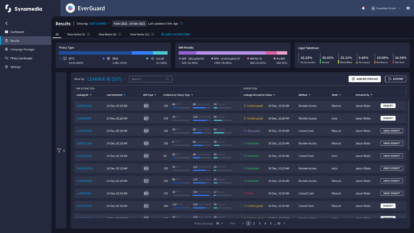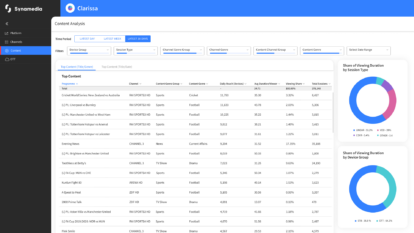Five truths about streaming video piracy
Video piracy is on the rise. That’s a fact.
But despite the coverage, and concern, about 21st-century swashbucklers armed with a keyboard and Internet connection, how well do we know pirates? Do we really understand what they do and how they do it? More importantly, is there anything we can do to take them on?
Take this quick “Everything You Always Wanted to Know About Pirates” quiz to gain perspective… and to set the record straight.
True or false:
- There are hundreds of illicit streaming servers globally.
- Netflix isn’t taking steps to combat credentials sharing.
- Today’s pirates are primarily geeks in hoodies.
- DRM remains the best (and main) way to combat pirates.
- All you need is a good technological solution to thwart pirates.
And for the bonus. Pirates aren’t a real threat to our industry.
Let’s look at each of these statements to see how you fared.
1. Illicit IPTV networks are not to be taken seriously
When someone says, “piracy distribution channels,” what’s the first thing that comes to mind? Open websites? Social media channels? If so, you’re not alone: they are the piracy channels that both the public and industry focus on.
Truth be told, open web and social media services have one primary function – luring viewers into subscribing to illicit IPTV networks, where the big pirate money lies. With the look and feel of legitimate video streaming services, these networks position themselves as super-aggregators, offering thousands of channels and premium content at a low price. And according to Synamedia research, there are nearly 30,000 pirate networks worldwide.
2. Netflix isn’t acting against credentials sharing
Illegal sharing of credentials for popular OTT services such as Netflix, Disney+ or Amazon Prime is de rigueur these days. Particularly since it hasn’t been enforced… at least till now.
But this past February, OTT king Netflix announced that it will make it “easier” for members to share their credentials with others outside their household at a slight price increase. This has the potential of negating the problem of credentials sharing. We say stay tuned!
3. Pirates are geeks in sweats
You must remember that image of geeks in hoodies. Earlier, many pirates were wannabe Robin Hoods who thought it was cool to steal content from the rich and distribute it for free. Such thinking still resonates. According to a recent study, about 25% of viewers believe that the use of sports pirate services is justified.
Well guess what? The truth couldn’t be any further from such “noble” behaviour. Pirates are suit-and-tie businesspeople par excellence. So much so that they’ve built a hierarchical chain, challenging the best org charts in the industry. At the top of the pyramid is the wholesaler, aka the “godfather,” followed by hundreds of resellers who directly connect with subscribers. It’s all so simple… and profitable because stolen content equals free content.
4. DRM is the only way to go
Even after over 40 years in the industry, DRM is still relevant. However, the arrival of OTT services has changed the rules of the security game, for which DRM offers no response.
- More unmanaged devices mean more vulnerability
While content is accessible anytime, anywhere, and on any device, unmanaged devices like smartphones, browsers, and smart TVs can be more easily exploited.
- Setting up a piracy service is not rocket science
In fact, the piracy marketplace is so well established and robust that anyone interested in getting in on the action can easily access a slew of easy-to-use tools at a reasonable price.
- Common DRM breaches lead to illicit content re-streaming
Pirates have access to tools enabling them to impersonate legit apps, while stripping away DRM protections to unimpededly re-stream content.
- OTT service theft streamlines the piracy supply chain
Pirates help peers gain control of content through CDNs. This gives multiple clients network access via a single account so that they can circumvent concurrency limitations and obtain all required licences and access tokens. The end result: illegal streams make their way to various piracy services, and you get left with the CDN servicing bill.
Given these and other fast-evolving technological changes across the industry, complementary solutions to DRM are a must-have.
5. All you need is technology
Piracy is a cybercrime, and pirates are cybercriminals. So, it only makes sense that you need technology to halt such “crime by technology.” For example, watermarking technology helps detect content leakage, monitoring illicit streams is a step toward disrupting piracy operations, and credentials sharing solutions identify and halt this widespread sharing phenomenon.
But technology has its limitations. It’s a key element in the fight against pirates, but not the only one.
What’s next?
Now that you’re equipped with the truths about piracy, it’s time to do something about it.
Browse our interactive MythBusters page to equip yourself with the tools you need to protect and grow your business.
About the Author
We’re trusted by service providers and content owners to deliver, enrich, and protect video. The flexibility and agility of our cloud and SaaS products enable customers of all types and sizes to launch, monetise, and scale services at speed. Our award-winning portfolio includes advanced advertising, business analytics, broadband and streaming video platforms, intelligence-led anti-piracy, and video network cloud and software solutions. Synamedia is backed by the Permira funds and Sky.













